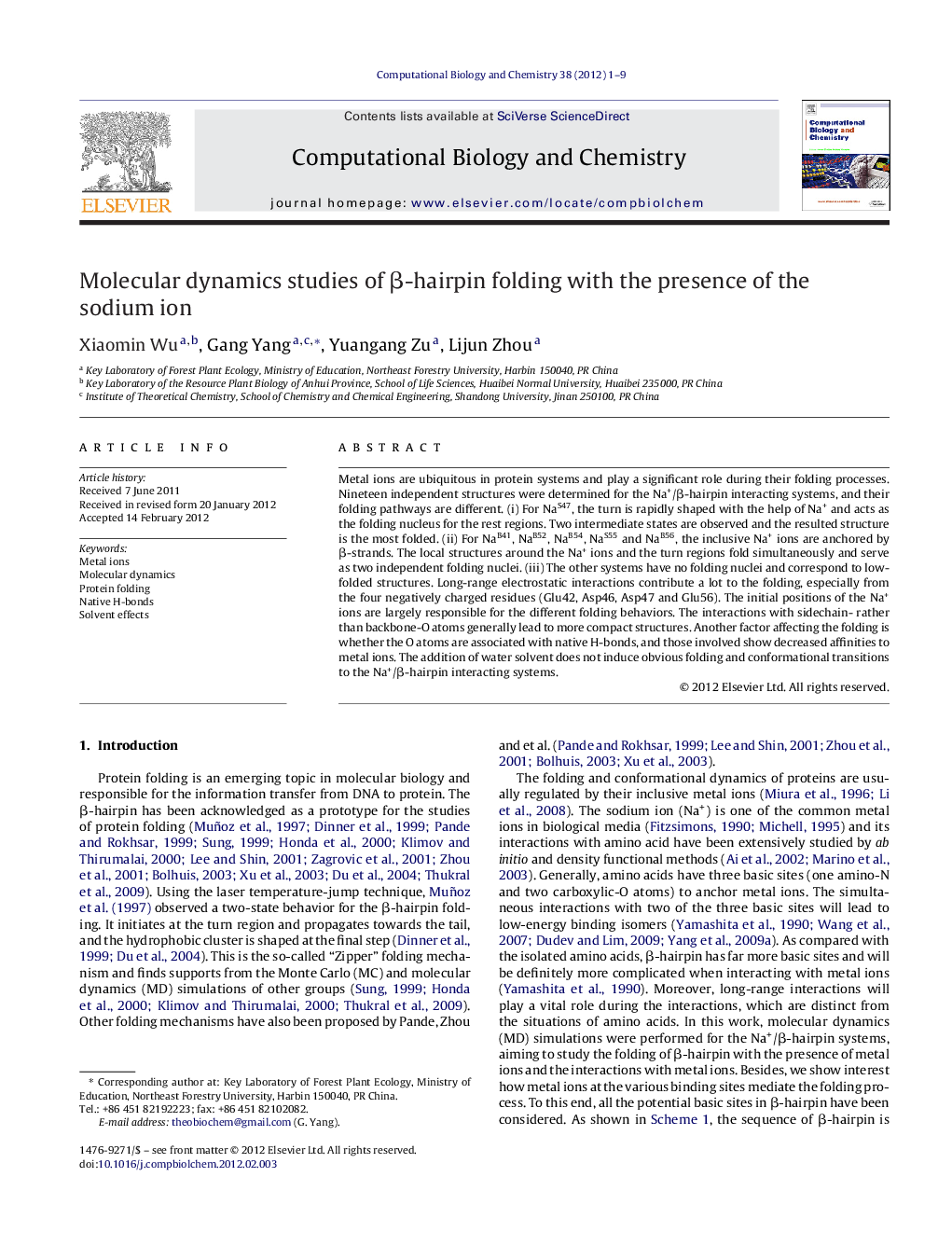| Article ID | Journal | Published Year | Pages | File Type |
|---|---|---|---|---|
| 15184 | Computational Biology and Chemistry | 2012 | 9 Pages |
Metal ions are ubiquitous in protein systems and play a significant role during their folding processes. Nineteen independent structures were determined for the Na+/β-hairpin interacting systems, and their folding pathways are different. (i) For NaS47, the turn is rapidly shaped with the help of Na+ and acts as the folding nucleus for the rest regions. Two intermediate states are observed and the resulted structure is the most folded. (ii) For NaB41, NaB52, NaB54, NaS55 and NaB56, the inclusive Na+ ions are anchored by β-strands. The local structures around the Na+ ions and the turn regions fold simultaneously and serve as two independent folding nuclei. (iii) The other systems have no folding nuclei and correspond to low-folded structures. Long-range electrostatic interactions contribute a lot to the folding, especially from the four negatively charged residues (Glu42, Asp46, Asp47 and Glu56). The initial positions of the Na+ ions are largely responsible for the different folding behaviors. The interactions with sidechain- rather than backbone-O atoms generally lead to more compact structures. Another factor affecting the folding is whether the O atoms are associated with native H-bonds, and those involved show decreased affinities to metal ions. The addition of water solvent does not induce obvious folding and conformational transitions to the Na+/β-hairpin interacting systems.
Graphical abstractFigure optionsDownload full-size imageDownload as PowerPoint slideHighlights► The interactions of metal ions with the model peptide (β-hairpin) were studied for the first time. ► Three different folding mechanisms were proposed for β-hairpin with the mediation of the sodium ion. ► The vital roles of metal ions during the folding processes were clarified. ► Long range interactions were found to contribute a lot to the folding processes. ► The factors that influence the folding qualities (e.g., native H-bonds) were discussed.
